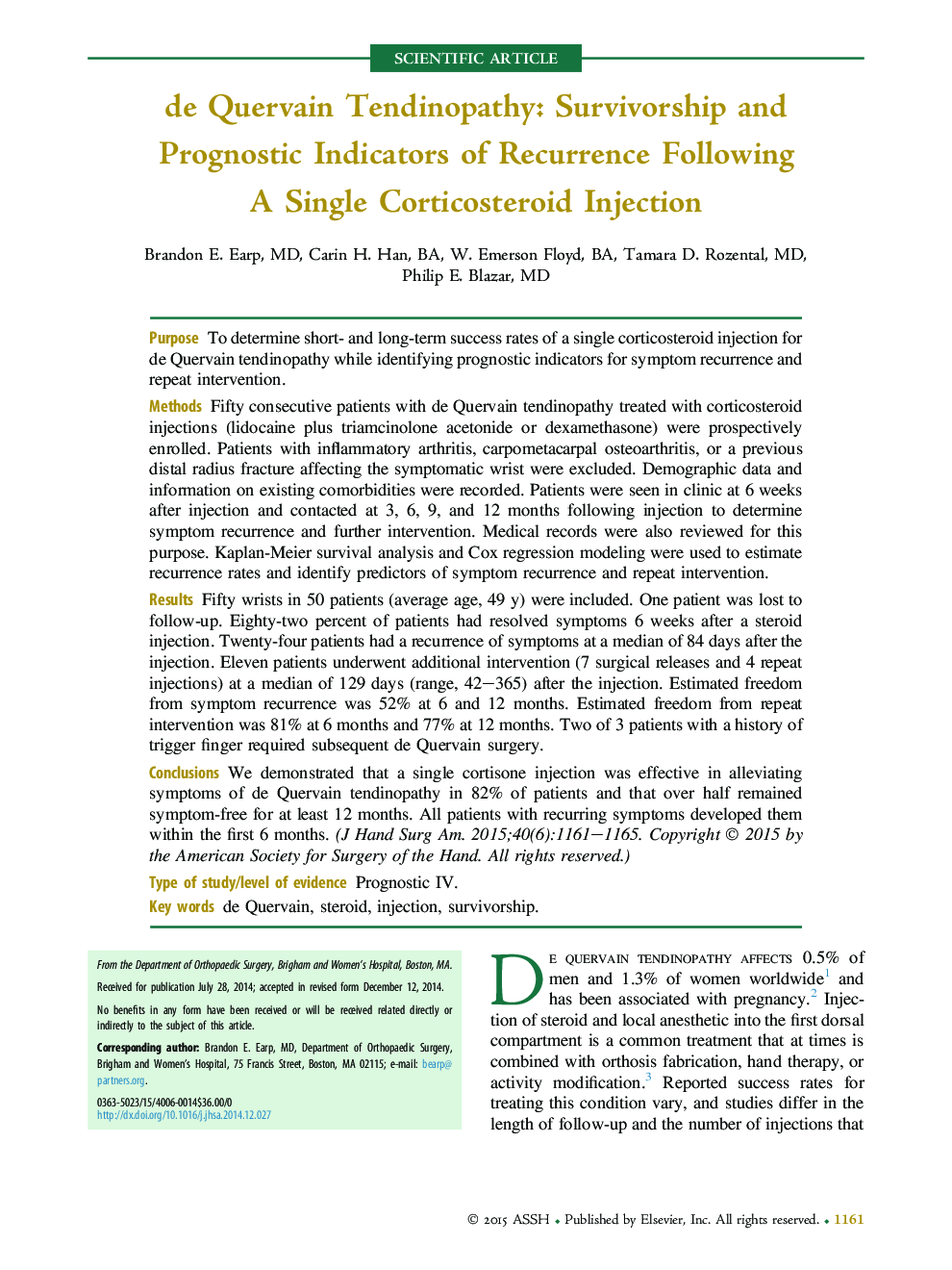| Article ID | Journal | Published Year | Pages | File Type |
|---|---|---|---|---|
| 4066723 | The Journal of Hand Surgery | 2015 | 5 Pages |
PurposeTo determine short- and long-term success rates of a single corticosteroid injection for de Quervain tendinopathy while identifying prognostic indicators for symptom recurrence and repeat intervention.MethodsFifty consecutive patients with de Quervain tendinopathy treated with corticosteroid injections (lidocaine plus triamcinolone acetonide or dexamethasone) were prospectively enrolled. Patients with inflammatory arthritis, carpometacarpal osteoarthritis, or a previous distal radius fracture affecting the symptomatic wrist were excluded. Demographic data and information on existing comorbidities were recorded. Patients were seen in clinic at 6 weeks after injection and contacted at 3, 6, 9, and 12 months following injection to determine symptom recurrence and further intervention. Medical records were also reviewed for this purpose. Kaplan-Meier survival analysis and Cox regression modeling were used to estimate recurrence rates and identify predictors of symptom recurrence and repeat intervention.ResultsFifty wrists in 50 patients (average age, 49 y) were included. One patient was lost to follow-up. Eighty-two percent of patients had resolved symptoms 6 weeks after a steroid injection. Twenty-four patients had a recurrence of symptoms at a median of 84 days after the injection. Eleven patients underwent additional intervention (7 surgical releases and 4 repeat injections) at a median of 129 days (range, 42–365) after the injection. Estimated freedom from symptom recurrence was 52% at 6 and 12 months. Estimated freedom from repeat intervention was 81% at 6 months and 77% at 12 months. Two of 3 patients with a history of trigger finger required subsequent de Quervain surgery.ConclusionsWe demonstrated that a single cortisone injection was effective in alleviating symptoms of de Quervain tendinopathy in 82% of patients and that over half remained symptom-free for at least 12 months. All patients with recurring symptoms developed them within the first 6 months.Type of study/level of evidencePrognostic IV.
